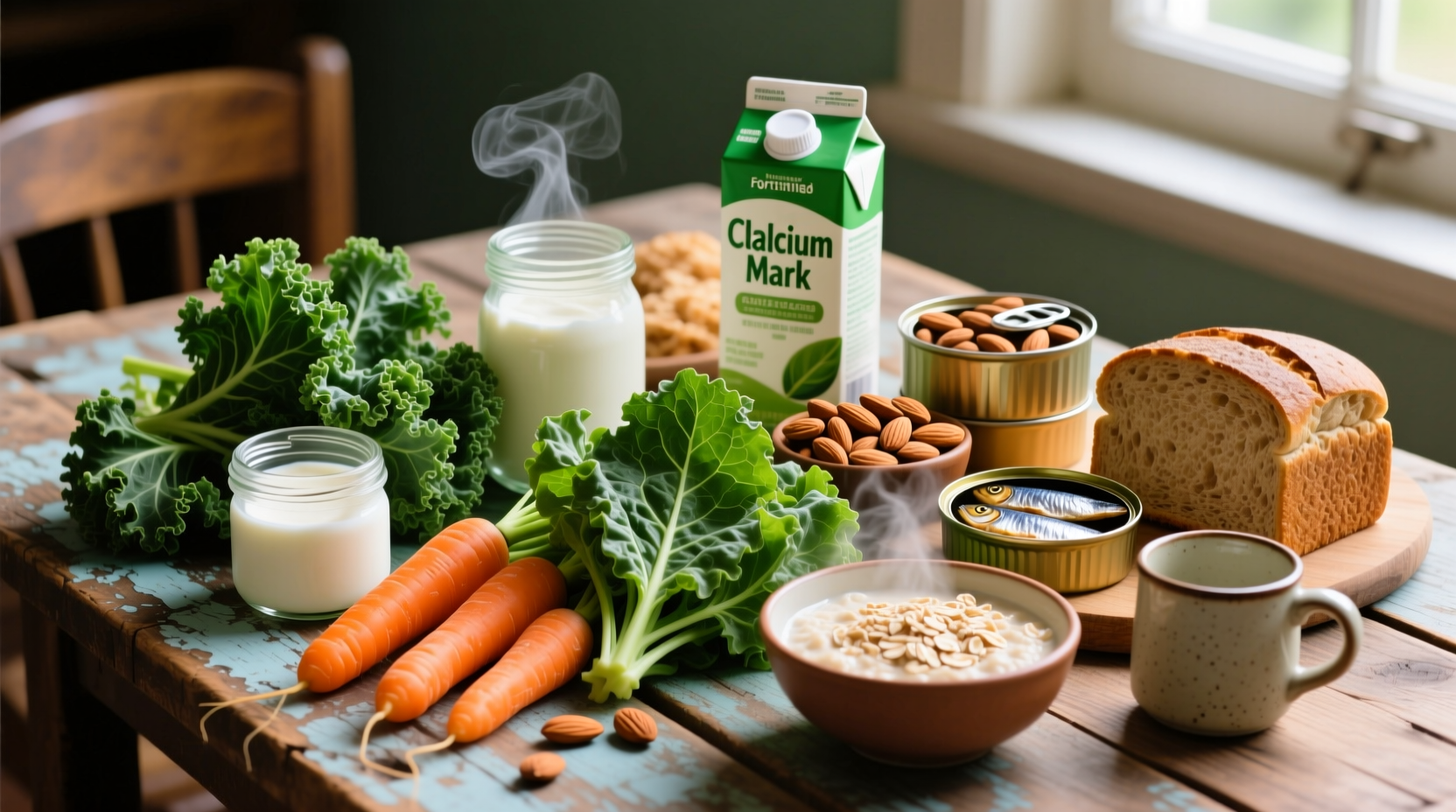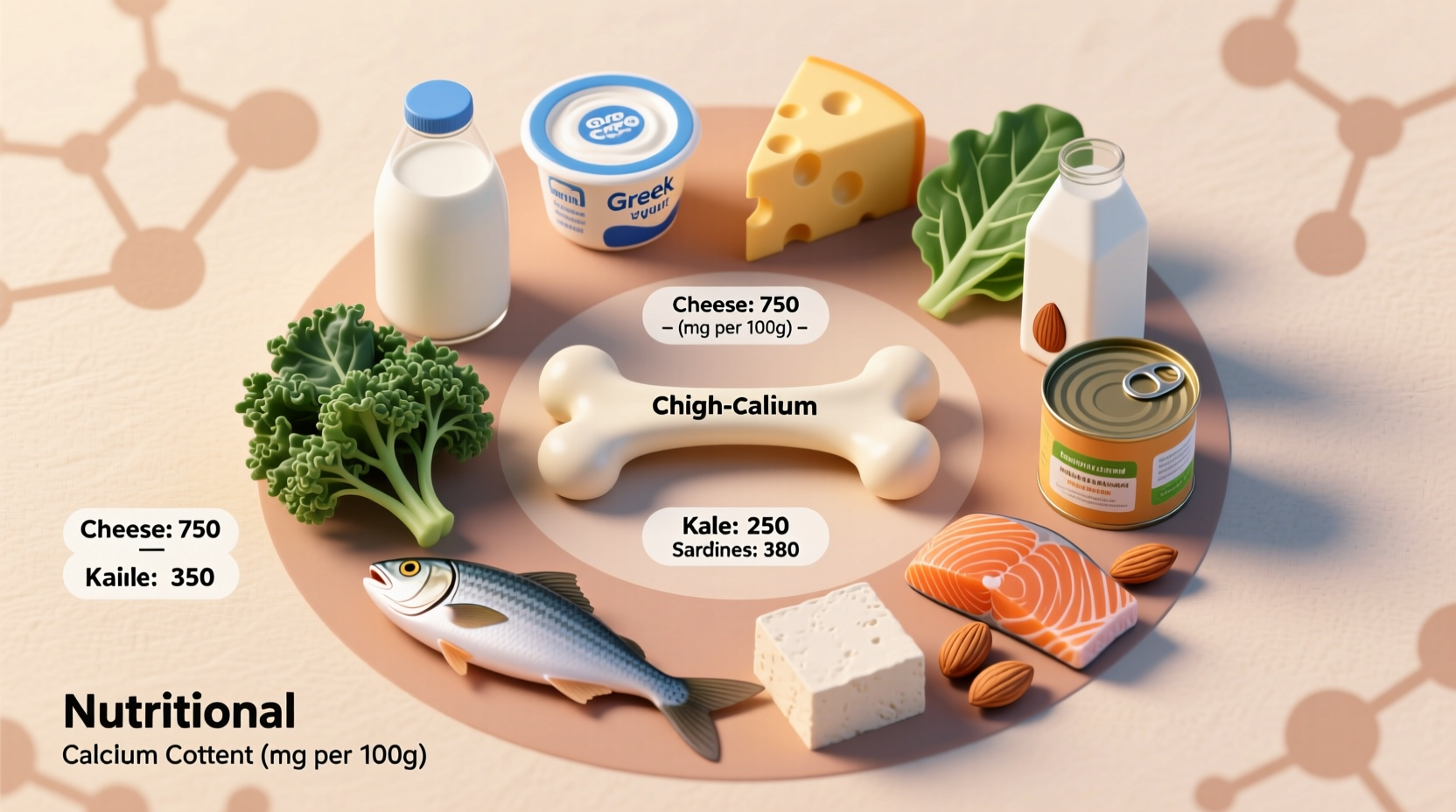Adults need 1,000-1,300 mg of calcium daily. Top natural sources include dairy products like milk (300mg/cup), yogurt (450mg/serving), and cheese (330mg/1.5oz). For non-dairy options, choose fortified plant milks (300mg/cup), canned sardines (325mg/3oz), tofu made with calcium sulfate (350mg/½ cup), and dark leafy greens like cooked kale (180mg/cup).
Calcium isn't just about strong bones—it's essential for muscle function, nerve transmission, and blood clotting. Yet nearly 40% of Americans don't meet daily requirements. This guide cuts through the confusion with science-backed food sources that actually deliver bioavailable calcium.
Why Calcium Source Matters More Than You Think
Not all calcium-rich foods provide equal benefits. Bioavailability—the percentage your body can actually absorb—varies dramatically. Dairy calcium has 30% absorption, while some plant sources range from 5-60% depending on compounds like oxalates. Understanding these differences helps you make smarter dietary choices.
Your Calcium Checklist: What to Prioritize First
When building your calcium strategy, focus on these categories in order of bioavailability and nutrient density:
Dairy Powerhouses (Highest Bioavailability)
Milk, yogurt, and cheese deliver calcium with superior absorption rates. A single cup of plain yogurt provides nearly half your daily needs. Recent USDA research shows full-fat dairy may enhance calcium utilization compared to skim versions due to fat-soluble vitamin synergy.
Fortified Foods: The Non-Dairy Solution
For lactose-intolerant individuals or vegans, fortified options bridge the gap. Choose wisely—calcium carbonate (in most plant milks) has 25-30% absorption, while calcium citrate (in some juices) reaches 35%. Always pair with vitamin D sources for maximum uptake.
Seafood Surprises You're Missing
Canned sardines and salmon with bones deliver calcium plus vitamin D and omega-3s. Three ounces of sardines provide 35% of your daily calcium—more than a cup of milk. These marine sources also contain strontium, which Mayo Clinic research shows supports bone density.
| Food Source | Calcium (mg) | Per Serving | Key Advantages |
|---|---|---|---|
| Plain yogurt | 450 | 1 cup | Probiotics enhance absorption |
| Canned sardines | 325 | 3 oz | Vitamin D + omega-3 synergy |
| Fortified almond milk | 300 | 1 cup | Lactose-free option |
| Cooked collard greens | 266 | 1 cup | Low oxalate = better absorption |
| Calcium-set tofu | 350 | ½ cup | Check label for calcium sulfate |

When Plant Sources Fall Short: The Oxalate Problem
Spinach and Swiss chard contain calcium, but their high oxalate content blocks absorption—only 5% becomes available. Opt instead for low-oxalate greens like bok choy (130mg/cup, 50% absorption) and kale (180mg/cup, 40% absorption). This distinction explains why population studies show Harvard research that dairy consumers generally have higher bone density than those relying solely on high-oxalate greens.
Daily Integration Strategies That Work
Forget supplements—build calcium into meals effortlessly:
- Add sesame seeds (138mg/tbsp) to stir-fries and salads
- Choose calcium-fortified orange juice with breakfast
- Use blackstrap molasses (172mg/tbsp) in baking
- Snack on almonds (75mg/24 nuts) with dried figs (120mg/5 figs)
Special Considerations by Life Stage
Your calcium needs shift dramatically:
- Teens: Require 1,300mg daily for bone mass development
- Pregnant women: Need same as non-pregnant (1,000mg) but absorption increases 30-40%
- Post-menopausal women: Jump to 1,200mg due to decreased absorption
- Vegans: Require 1,000-1,200mg to compensate for lower bioavailability
Calcium Myths That Could Harm Your Health
Many believe more is always better, but excessive calcium (>2,500mg daily) increases kidney stone risk and may interfere with iron absorption. Recent National Academies research confirms that food sources rarely cause overload—supplements pose the real risk. Focus on spreading intake throughout the day since your body absorbs only 500mg at a time.
Putting It All Together: Your 7-Day Calcium Plan
Start with these realistic daily combinations:
- Breakfast: Fortified cereal (100mg) + fortified plant milk (300mg)
- Lunch: Tofu stir-fry with bok choy (250mg)
- Dinner: Sardines salad with sesame dressing (350mg)
- Snack: Almond butter on whole grain toast (100mg)
This pattern delivers approximately 1,100mg without dairy—easily adjustable for individual needs.











 浙公网安备
33010002000092号
浙公网安备
33010002000092号 浙B2-20120091-4
浙B2-20120091-4